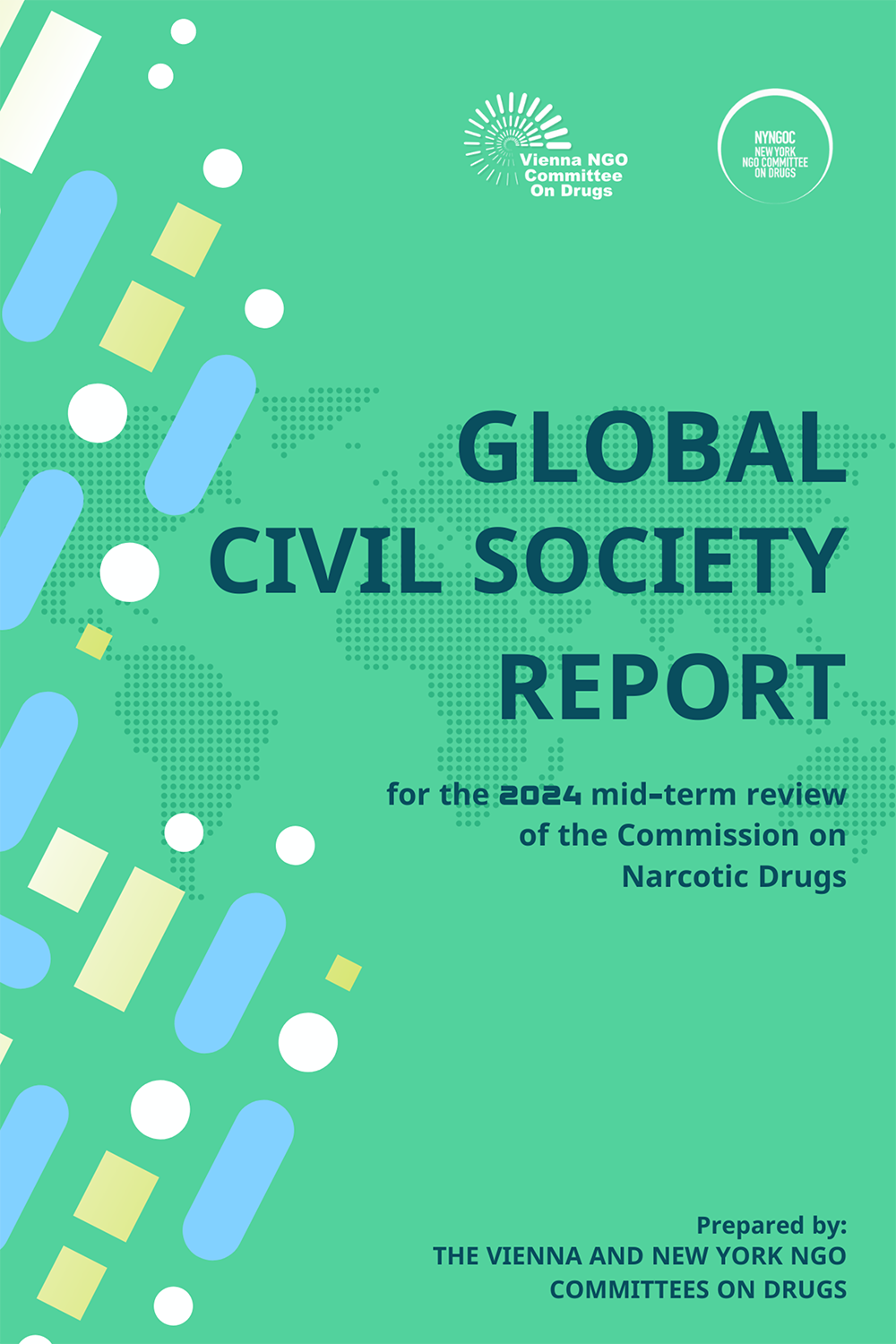Introduction
We are delighted to present the Global Civil Society Report on the impending mid-term review of the Commission on Narcotic Drugs (CND) in 2024. This report is a collaboration between the Vienna and New York NGO Committees on Drugs (VNGOC and NYNGOC), bringing together insights from a global online survey, regional consultations, and civil society contributions to the CND discussions spanning from 2019 to 2023.
The document underscores the importance of meaningful, comprehensive, structured, and balanced civil society engagement in the formulation and implementation of drug policies on all levels. We firmly believe that integrating diverse perspectives from global civil society organizations enriches policy discussions, offering a mosaic of insights. Much like Member States, civil society organizations exhibit diverse viewpoints. This report aims to represent these varied opinions, acknowledging that constructive debates and disagreements are inherent elements of a robust and inclusive policymaking process.
Methodology
This report summarizes data from a comprehensive mixed-methods study involving NGOs worldwide working on drugrelated issues. These organizations operate in diverse areas, including direct service provision, policy advocacy, research, prevention, harm reduction, treatment, recovery, education, and other related fields.
The VNGOC and NYNGOC collaboratively developed the online survey questions and conceptualized the regional consultations in September 2023. The online survey incorporated both quantitative and openended questions, encompassing the challenges outlined in the 2019 Ministerial Declaration. The web link to the survey was circulated via emails, websites, and social media by the VNGOC and NYNGOC and by numerous partners and networks around the world between 18 October and 8 December 2023. The survey was available in Arabic, English, French, Russian, and Spanish and comprised 50 questions in total, with Likert scale questions and open-ended text-based questions to elicit more in-depth and richer responses. A ‘skip logic’ feature was integrated into the survey, guiding respondents based on their responses (i.e., some ‘no’ responses led to respondents skipping over follow-up questions).
